TP-Link TL-SH1832 Power Consumption and Noise
In terms of power consumption, we saw an idle power consumption figure of around 16.8-16.9W.
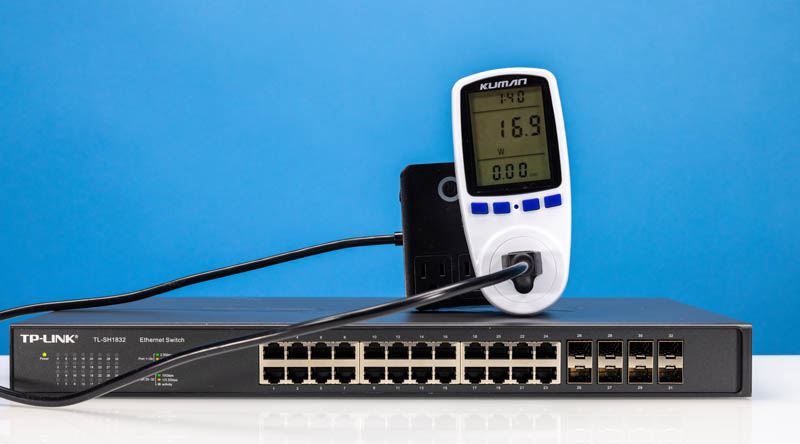
For each incremental 2.5GbE link, we saw around 0.4W of additional power consumption.
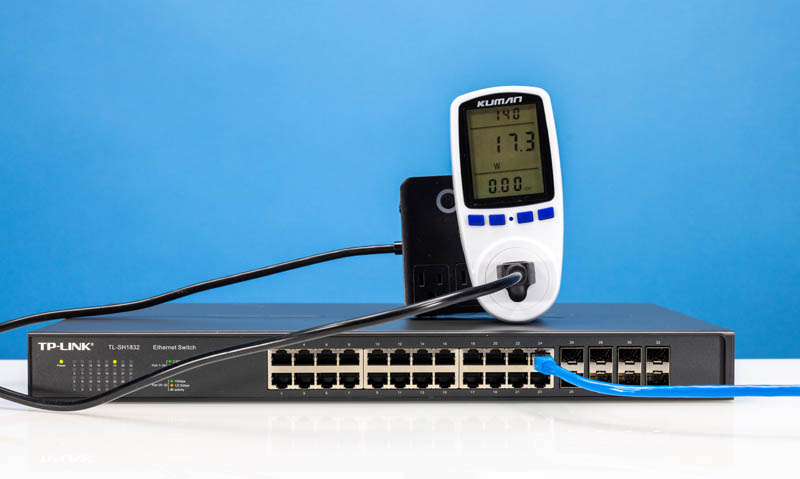
We also plugged a SFP+ to 10Gbase-T adapter in since those tend to use a lot of power immediately when plugged in and we added 1.7W.
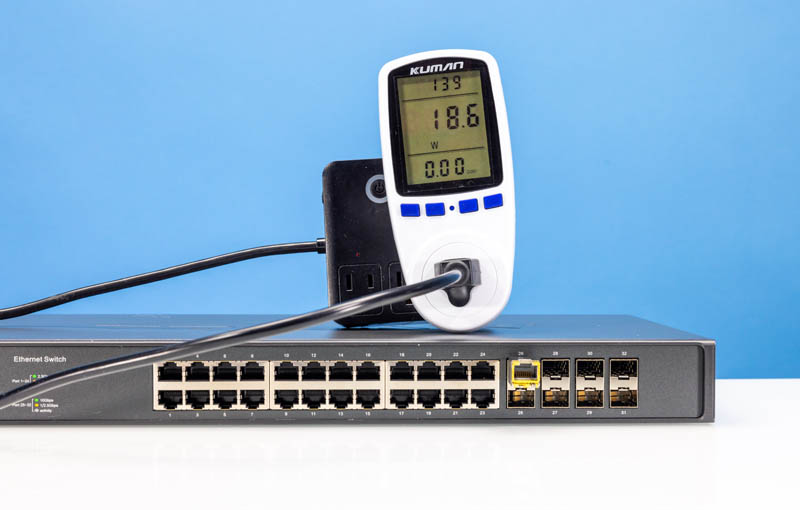
All told, we were able to get this switch into the 40-45W range. There is probably room to go up so perhaps 50-55W is the maximum.
On the noise side, as a fanless switch, it was silent. That led to one of our key lessons learned.
Key Lessons Learned
We have a few key lessons learned. Although we would have liked a managed switch, at this price, an unmanaged version is reasonable. Still, we wish there was either a fan or an easy place to mount a fan since 40-50W in a small 1U chassis like this is a lot. The unit got hot, but it did not crash for us. Still, it is something to keep in mind, especially since this is designed for the lowest cost possible.
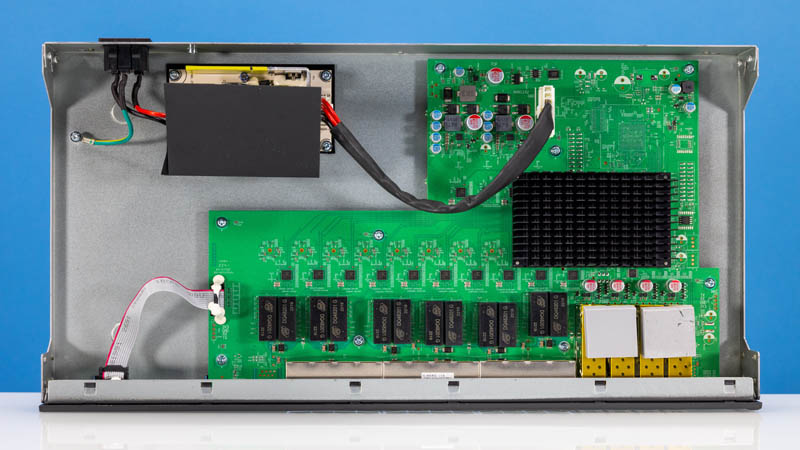
We verified that this is not a PoE switch. This would have a much broader market if it had big PoE++ power output to service next-gen WiFi APs.
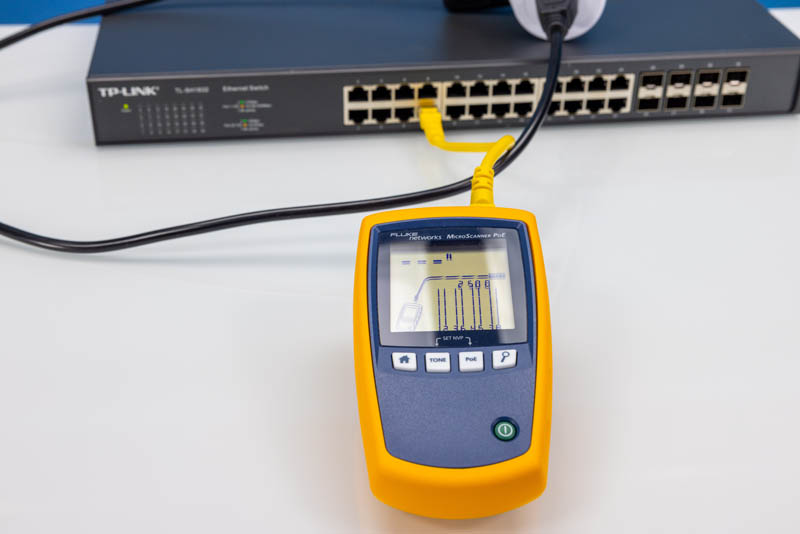
The big key lesson learned though is pricing. Using services like SuperBuy for Taobao, we could find this switch for around $421 even though the domestic China price is often under $390. After that, $421, slow mode shipping cost us around $460 is was very slow. The second unit we purchased arrived weeks before this one. Air freight to the US was $140 on this item and a 10+ day delivery time.
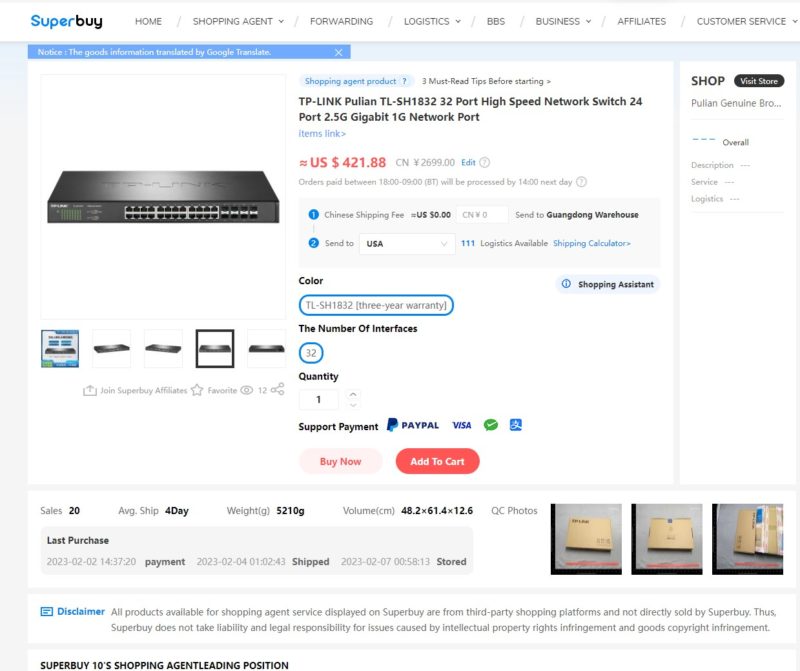
We spent a bit more on AliExpress, and this unit arrived very fast using ~$30 DHL shipping. AliEpxress has sellers selling these for $729-750, but there are a few more reasonable options.
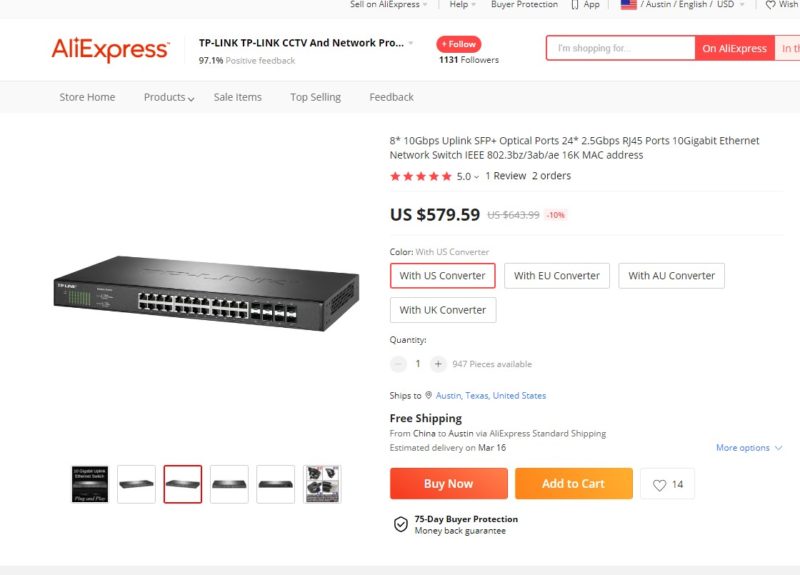
Doing the math, taking the 8-port SFP+ switch at $166 we reviewed in our Cheapest 10GbE 8-port Switch TP-Link TL-ST1008F Review and subtracting that from the prices, we saw something interesting.
The Taobao option using slow shipping would have come out to around $12/ 2.5GbE port. The AliExpress option is still only $17/ 2.5GbE port. This is less expensive than the 5-port switches we are reviewing as part of a round-up.
Perhaps the biggest takeaway is that these are hard switches to buy and lack regulatory and compliance markings. To us, we just want a vendor to produce a similar ~$400 (or even $500) switch based on the same platform that can run in the US. Why are 2.5GbE switches so much more expensive in the US? TP-Link sells plenty of products here, but this is not one of them. We hope a vendor steps in an makes something similar with regulatory and compliance certifications because this is an area where there should not be such a big gap. Of course, it would be great if that model also had a variant with PoE++.
Final Words
Overall, the TP-Link TL-SH1832 is quite an interesting package. On the one hand, it is an unmanaged fanless switch with a surprising amount of capacity. On the other hand, it is very hard to buy, and for many, the lack of FCC, CE, or UL markings will immediately take this out of consideration.
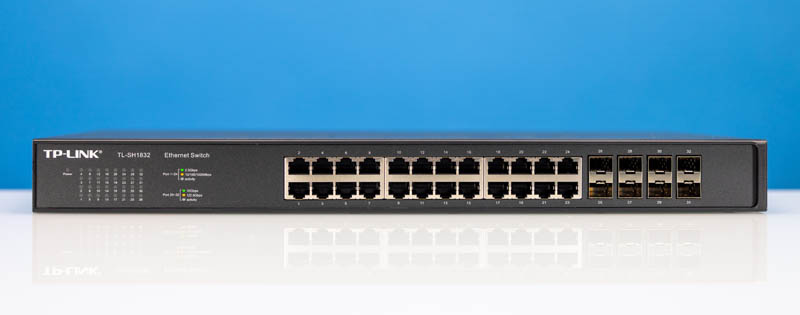
What we need is more lower-cost 2.5GbE switches on the market. This is one where we found something that is a reasonable port configuration that performed reasonably well. At the same time, this reasonable configuration we cannot buy easily. That seems like a huge market gap at the moment. We know we have some intrepid STH readers that will buy these because there is no other option, but there should be.




This is quite an interesting switch for the right application. Maybe Video Workstations with shared storage. The fact its a “dumb” switch really limits its potential for lots of home lab configurations. Still it nice to see 2.5G/10Gb mixed ports. Seems like 1Gb has been the default for so long now. Easily 15 years now.
Suddenly I wonder how the performance graph is measured. Is there a place where the testing methodology is explained?
What happens if all 2.5Gbit ports try to send data to one of the 10Gbit ports simultaneously? Do they each get a fair share of bandwidth? Are packets dropped? What about average and tail latency? What is the longest round trip when the switch is loaded?
What happens if each 2.5Gbit port is paired with another 2.5Gbit and each 10 Gbit port is paired with a 10Gbit port and bidirectional communication bandwidth measured between the pairs? What about tail latency in this case?
What happens if each port as simultaneously as possible sends data in turn to all of the others? Is this much different than the case when the data flows only between pairs of ports?
Given the equipment and switches available, it would be great to develop some tests that might characterize performance between switches in a more distinctive way.
I wonder if, like many other cheap unmanaged switches, if the switch ASIC actually has the capability but there’s just no management card installed. I couldn’t get a good look at the PCB to see if that might be the case.
The lack of fans jumped right out at me from the first edge-on photo. I’d screw this vertically to a backboard in a closet and trust it to convect just fine, but laying flat? Nah. That’s too much heat for comfort.
It looks like it’d be trivial to stick some fans in the case, though. And since it has massive heatsinks, they could be slow quiet fans indeed, and spaced back from the grille to reduce noise, while still getting the job done.
Interesting! Thank you for the article, I would love to see this in greater depth. Also, can you reach out to TP-Link for comment about the market segmentation?
10GbE switches haven’t come to consumers because manufacturers are colluding. These cost no more than 1GbE switches. It’s all a scam to extract more profits.
Is there a cheap “managed” version of this switch available in China?
Why is 2.5GbE and multi-GbE so expensive in the U.S.? Price fixing/colluding between networking companies.
This is the same nonsense pulled by the memory companies on multiple occasions in the U.S. over the last several decades, and it’s being pulled by GPU manufacturers at the moment as well.
Why sacrifice profits when you and your 1-2 competitors can all agree to keep prices artificially high?
i wish Metgear made a layer 2+ managed of this switch with 300W of PoE with 4 SFP+ cages
@Glen : For 10GbE it remains this patent : https://patents.google.com/patent/US7164692B2/en which expire this year by july so after that the cost by port for a switch with 10GbE ports will be more affordable
MikroTik please make this managers with PoE60
@flo With the way Google has been acting and performing, I wouldn’t be surprised if they draw some aspirin tablets onto the diagrams, claim it’s actually a pharmaceutical product and argue they should be granted an extended period of market exclusivity.
C’mon guys, do a proper review.
What is the Network SoC?
Is this really unmanaged or does it have ‘lite’ management?
Proper throughput testing?
They didn’t name the network chip but if you’re being fair, they’ve said they didn’t see anything on Wireshark, and a management interface would be easy to see. They also did throughput testing to the level anyone using an unmanaged switch would care about since they’ve shown it’s at least non-blocking. STH isn’t perfect, but you’ve gotta be fair.
uzman77 – the fact that this has 2.5GbE ports implies it is aimed at the consumer/prosumer market. There’s loads of problems with 2.5GbE NICs. Would be nice to do throughput testing with NICs, SFP+ transceivers etc
STH has done this in the past – for example with SFP+ transceivers where – to paraphrase you, it did as you say ‘throughput testing to the level where anyone wanting basic NBase-T would care’. (https://www.servethehome.com/sfp-to-10gbase-t-adapter-module-buyers-guide/) People who purchased on the basis of that got burned when the SFP+ transceivers turned out to be highly directional in throughput
@WB the patent is owned by Intellectual Ventures, not by Google.
I hope prices drop quickly after July 18th 2023.
Curious as to the Network SoC and other ICs on board
Now…
Make it managed
Have POE++ on at least 4 ports
POE+ on the rest and We’ve got a deal.